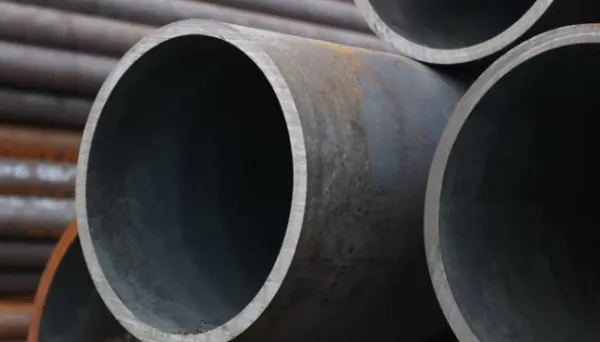Understanding Why Schedule 40 and Schedule 80 Matter
In piping engineering, selecting the right steel pipes is never a simple task. Many newcomers to the industry, seeing Schedule 40 and Schedule 80, often think there's little difference between them, or even that they're just two different types of pipes with different prices. However, after spending some time on project sites, you'll find that the difference between these two specifications can sometimes determine whether a system can operate safely and reliably for over a decade.
The so-called "Schedule" is actually the way steel pipe wall thickness is indicated in the US standard system. It's not a specific number in millimeters, but a grade classification. The larger the number, the thicker the wall, and the greater the pressure it can withstand. SCH40 and SCH80 are the two most common grades, almost ubiquitous in engineering projects. Interestingly, many people, when first encountering them, assume that "40" and "80" are thickness values, which is completely incorrect. The true wall thickness can only be determined by consulting a table, not by guessing from the numbers.
For example, a 1-inch steel pipe has a wall thickness of approximately 0.109 inches for SCH40 and 0.154 inches for SCH80. The difference might not seem significant at first glance, but the weight difference is noticeable, and the sound is also different. In high-pressure systems, this difference becomes even more significant because pressure is not a steady line but fluctuates constantly, especially at the moment of valve closure or pump startup, where the internal pressure surge is much higher than the static pressure. Thin-walled pipes are more prone to fatigue under such impacts, while thick-walled pipes can effectively mitigate the risk.
Difference Between Schedule 40 And Schedule 80 Steel Pipe
The core difference between Schedule 40 and Schedule 80 lies in their wall thickness. Schedule 80 is thicker, more pressure-resistant, heavier, and more expensive.
SCH40, due to its thinner wall and higher flow rate, is the primary choice for many everyday systems. For residential water supply, agricultural irrigation, and air or water pipes in small factories, SCH40 is generally sufficient as long as the pressure is not high. It is lighter, easier to install, and cheaper, making it a preferred choice for projects with limited budgets.
However, in slightly more demanding working environments, the advantages of SCH80 become immediately apparent. Thicker walls not only mean greater pressure resistance but also better resistance to external impacts, long-term wear, and corrosion. In high-pressure or high-risk environments such as chemical, petroleum, steam transmission, and hydraulic systems, SCH40 is rarely considered because these environments place extremely high demands on piping; any leak could lead to equipment downtime or even a safety accident. In underground pipelines, especially buried in rock or soil layers, or in high-humidity or corrosive areas, SCH80 is also significantly more durable.
Of course, thicker walls aren't perfect. Because the inner diameter is reduced, flow rate is naturally affected. For some systems requiring high flow rates, such as drainage or circulating water, choosing SCH80 might impact overall efficiency. Pipe selection in engineering is never simply about choosing the "stronger" option; it requires a trade-off based on system priorities: Do you need more flow rate or more pressure resistance? Do you prioritize a smaller initial investment or decades of worry-free maintenance?

Choosing the Right Pipe for the Right Project
In real-world projects, engineers who accurately select the appropriate specifications don't rely on memorizing formulas, but rather on a comprehensive assessment of the environment, temperature, pressure, corrosion levels, flow rate, and even future maintenance methods. I once reviewed a cooling tower return water project where the pressure wasn't particularly high, but due to prolonged exposure to outdoor sunlight and slightly corrosive water, the designers ultimately opted for SCH80. The reason was simple—it could withstand the test of time. In another domestic water system, where pressure and temperature were relatively stable but flow rate requirements were high, SCH40 was naturally chosen because it's lightweight, cost-effective, quick to install, and perfectly adequate.
Project selection is never about "which is best," but rather "which is most suitable." As long as the project's actual conditions are considered, both types of steel pipes can maximize their value in their respective areas. The key is not to blindly pursue high specifications, nor to ignore safety boundaries to save money. A correct choice can ensure a stable system for ten, twenty, or even more years; a wrong choice may lead to rework before completion.
Whether you ultimately choose Schedule 40 or Schedule 80, it's essentially about balancing stress, lifespan, cost, and environmental conditions. The answer may differ for each project, but understanding the underlying principles will help you make informed decisions. Placing the right pipe in the right place is being responsible for the entire system and for future maintenance costs. Ultimately, engineering isn't about using the "most expensive" materials, but about ensuring the system operates safely, stably, and reliably within a limited budget.
Throughout the selection process, referring to Schedule 40 Pipe Pressure Rating Chart and Guide allows engineers to quickly determine the pressure-bearing capacity of each pipe material under different pressures and temperatures when faced with complex system parameters. This makes the design more scientific and safe, and also significantly reduces the risks of later maintenance.






 English
English Español
Español بالعربية
بالعربية











 Phone :
Phone :  Whatsapp :
Whatsapp :  Email :
Email : 


